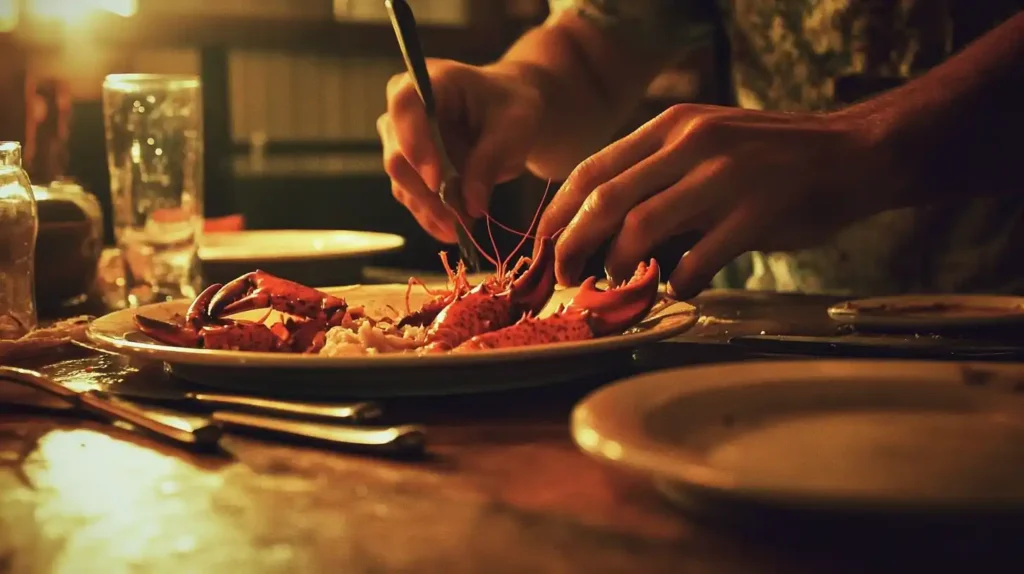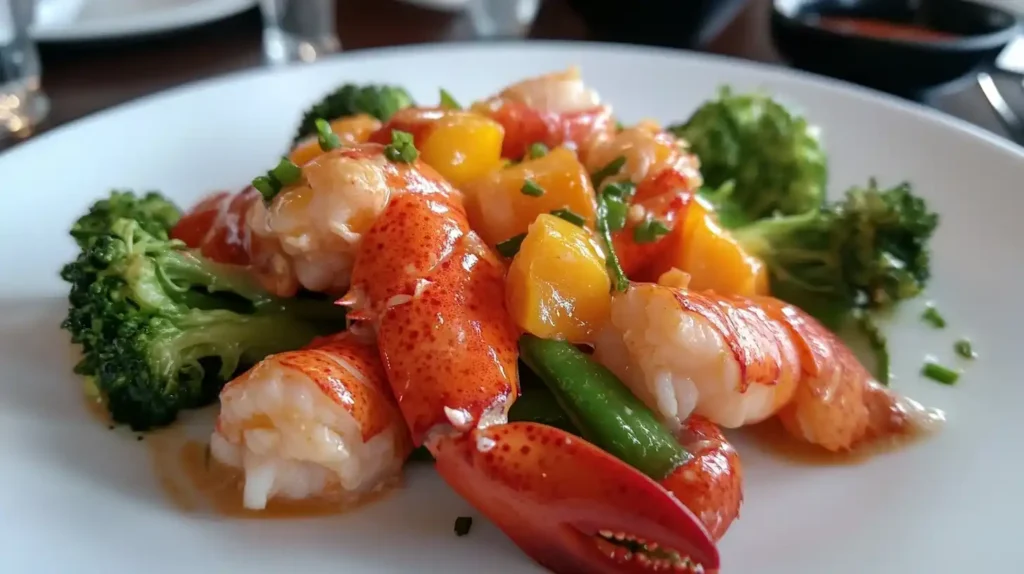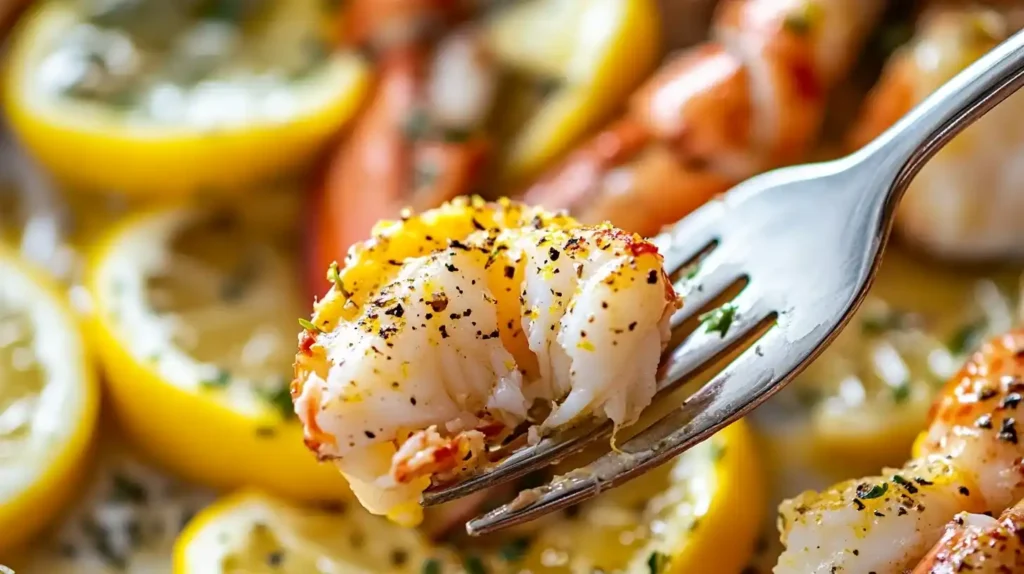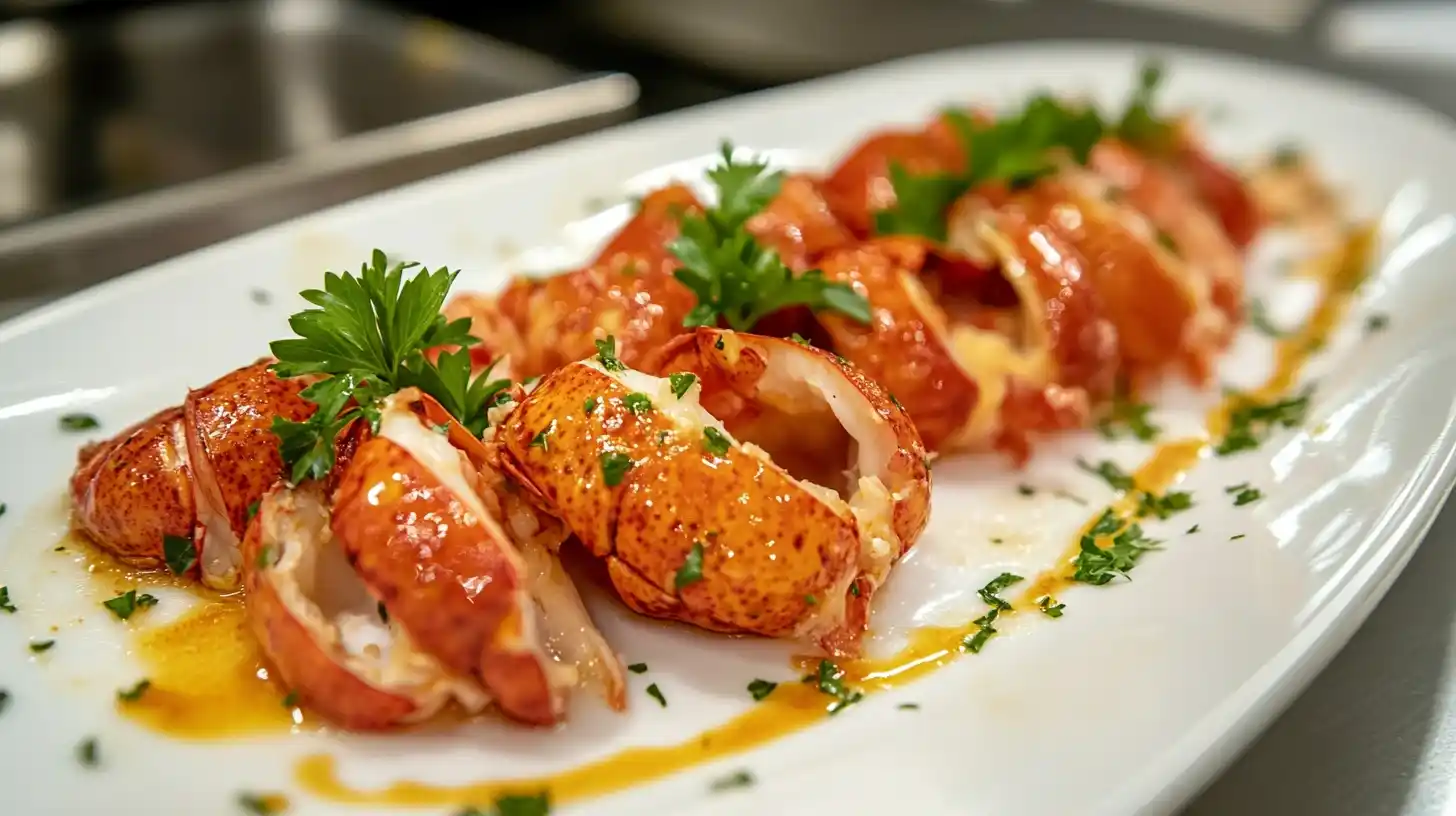Are Lobster Claws Good to Eat? Absolutely! Lobster claws are both flavorful and nutrient-rich, offering a delicious alternative to the more popular tail. Prized for their sweet flavor and tender texture, they are a favorite among seafood lovers. In this guide, we’ll explore why lobster claws are worth trying, their health benefits, and the best ways to cook them to perfection.

This version ensures the keyphrase appears in the first sentence, making the topic clear and boosting SEO readability. Would you like further adjustments?
In this article, we will look closely at the taste, texture, and health benefits of lobster claws. We’ll also guide you on how to cook them perfectly, ensuring every bite is as delightful as the first.
Would you like me to expand on the nutritional benefits of lobster claws next, or move on to another section?
Table of contents
Nutritional Benefits of Lobster Claws
Are lobster claws a healthy choice to eat? Yes, they are! Packed with lean protein and essential nutrients like phosphorus and magnesium, lobster claws provide a healthy option for seafood enthusiasts. Compared to other seafood, they are lower in calories and fat, making them ideal for balanced diets. Want to know how they stack up against other seafood? Discover the nutritional benefits of seafood.
High in Protein
Lobster claws are packed with protein, which helps repair your muscles and gives you energy. Unlike red meat, lobster provides lean protein with less fat. This makes it an excellent choice for anyone looking to stay healthy or build strength.
Rich in Essential Minerals
Lobster claws are full of minerals your body needs, such as:
- Phosphorus: Supports strong bones and teeth.
- Magnesium: Supports muscle relaxation and promotes heart health.
- Zinc: Boosts your immune system.

Low in Calories and Fat
Another great reason to enjoy lobster claws is their low calorie and fat content. If you’re watching your weight, lobster claws are a guilt-free way to enjoy seafood.
Why This Matters
Are Lobster Claws Good to Eat? Understanding why lobster claws are a great choice can help you make smarter decisions when enjoying seafood. Whether you’re looking for a healthier protein source, exploring new flavors, or trying to stick to a budget, lobster claws offer plenty of benefits. Let’s break down why these points are important and why lobster claws are good to eat.
Health Benefits for a Balanced Diet
Lobster claws provide a low-fat, high-protein option that’s packed with essential nutrients. In today’s world, where many people struggle to eat healthy, choosing foods like lobster claws makes it easier to stay on track. They’re a guilt-free indulgence that doesn’t compromise on flavor.
Flavor That Stands Out
The unique sweetness and tenderness of lobster claws make them an exceptional seafood option. Unlike heavier meats or fish, the delicate taste of claw meat pairs well with a variety of dishes. From simple recipes to gourmet meals, their flavor shines through.
An Affordable Seafood Option
Seafood is often seen as expensive, but lobster claws are proof that you can enjoy premium-quality ingredients without breaking the bank. Their lower price compared to tails makes them accessible to more people, allowing everyone to enjoy this luxury food.
Perfect for Special Occasions or Everyday Meals
Lobster claws fit into both casual and fancy dining experiences. Whether you’re hosting a dinner party or treating yourself to a quiet meal, they’re versatile enough to suit any occasion. Their ease of preparation also makes them a convenient choice for home cooks.
Why You Should Try Lobster Claws
When you choose lobster claws, you’re not just picking seafood—you’re opting for a combination of flavor, nutrition, and value. This makes them a standout choice for anyone looking to elevate their meals without extra effort.
Why Claws Are Sweeter Than Tails
The sweetness of lobster claws comes from their unique muscle composition. Unlike the tail, the claw muscles are used less frequently, resulting in a tender, melt-in-your-mouth texture. This makes them perfect for dishes where a delicate seafood flavor can shine.
Learn more about the nutritional benefits of lobster by visiting the Seafood Nutrition Partnership.
Taste and Texture: Claws vs. Tails
When it comes to taste and texture, lobster claws are truly special. They stand out from the tail with their softer, sweeter meat. Let’s explore what makes the claws such a delight to eat.
Sweeter Than the Tail
Lobster claws have a natural sweetness that sets them apart from the tail. This is because the muscles in the claws don’t work as much as the tail muscles. Less work means softer meat and a more delicate flavor.
Tender Texture
Unlike the tail, which can be firm and chewy, claw meat is soft and tender. The texture melts in your mouth, making it perfect for dishes like:
- Lobster rolls
- Creamy pasta
- Seafood soups

Perfect for Delicate Dishes
Lobster claws are a dream ingredient for creating light, flavorful dishes that let the natural sweetness of the meat shine. Their soft texture and mild flavor make them a versatile choice for recipes where balance is key. Let’s explore why lobster claws work so well in delicate meals and how you can use them in your kitchen.
Why Lobster Claws Work in Delicate Recipes
Unlike the firmer tail meat, lobster claw meat has a tender, almost creamy texture. This softness allows it to blend seamlessly into dishes without overpowering other ingredients. Here’s why claw meat is perfect for subtle, refined meals:
- Natural Sweetness: The meat’s gentle flavor enhances dishes without the need for heavy seasoning.
- Soft Texture: Its delicate consistency pairs beautifully with light sauces and fresh herbs.
- Versatility: Claws adapt well to a range of cuisines, from simple salads to gourmet entrees.
Dishes That Highlight Lobster Claws
Lobster claws shine in recipes where their unique qualities can stand out. Here are a few ideas:
- Lobster Rolls: Combine claw meat with a light dressing of mayo, lemon juice, and a touch of dill for a fresh, satisfying meal.
- Creamy Pasta: Toss claw meat into a pasta dish with a white wine or lemon butter sauce for an elegant twist.
- Seafood Risotto: Add claw meat to a creamy risotto for a luxurious touch.
- Salads: Mix lobster claw meat with fresh greens, avocado, and a tangy vinaigrette for a healthy, flavorful dish.
Tips for Enhancing Delicate Flavors
- Use minimal seasoning to let the lobster’s sweetness come through.
- Pair claw meat with light ingredients like citrus, olive oil, or fresh herbs.
- Avoid overcooking, as this can diminish the soft, tender texture.
Why It Matters
If you enjoy dishes with a refined flavor profile, lobster claws are an ideal choice. Their softness and sweetness bring sophistication to any meal, making them a favorite for chefs and home cooks alike.
Why Choose Lobster Claws?
If you love seafood that’s easy to eat and full of flavor, claws are the way to go. Their unique combination of sweetness and tenderness makes them a favorite for many lobster fans.
Cooking Lobster Claws to Perfection
Cooking lobster claws is straightforward and versatile. Whether you prefer boiling, steaming, or poaching in garlic butter, the results are always flavorful. Pair your claws with light sides like steamed vegetables or a zesty lemon butter sauce to let their sweetness shine.
Would you like to try incorporating claws into a seafood mix? Explore everything you need to know about seafood mix for creative ideas.
How to Choose the Best Lobster Claws
Before cooking, you need to pick high-quality claws. Here’s what to look for:
- Freshness: Fresh claws have a sweet, clean smell. Avoid any that have a strong fishy odor.
- Shell Quality: The shell should be bright red (if cooked) or brownish-green (if raw) without cracks.
- Weight: Heavier claws often have more meat.
Popular Cooking Methods
There are several ways to prepare lobster claws, depending on the flavors you want to bring out.
- Boiling
- Bring a large pot of salted water to a boil.
- Add the claws and boil for 7–10 minutes, depending on their size.
- Remove and let cool slightly before cracking open.
- Steaming
- Add water to a pot with a steaming rack.
- Place the claws on the rack and steam for 8–12 minutes.
- This method helps retain the natural juices and sweetness.
- Grilling
- Coat the claws with melted butter or olive oil.
- Grill over medium heat for 4–5 minutes on each side.
- Adds a smoky, rich flavor to the meat.
- Poaching in Garlic Butter
- Heat butter in a pan and stir in minced garlic.
- Gently simmer the claws in the butter for 5–7 minutes.
- This method infuses the meat with a rich, savory flavor.
Cooking Tips
- Be careful not to overcook, as it can make the meat tough.
- Use a nutcracker or lobster cracker to carefully break open the shell without damaging the meat.
- Serve immediately for the best taste and texture.
FAQs About Lobster Claws
Many people have questions about lobster claws, and it’s easy to see why. These tasty morsels are unique and sometimes misunderstood. Here are answers to some of the most frequently asked questions.
Are Lobster Claws Healthy to Eat?
Yes, lobster claws are incredibly healthy! They are:
- Low in Calories: Ideal for supporting a healthy weight.
- Rich in Protein: Ideal for muscle building and repair.
- Packed with Minerals: Full of essential nutrients like phosphorus and magnesium.
How Do You Properly Clean Lobster Claws?
Cleaning lobster claws is simple if you follow these steps:
- Boil or Steam First: Cooking makes it easier to crack the shell.
- Use a Nutcracker: Gently crack the claw’s shell to avoid breaking the meat.
- Rinse: Run the meat under clean water to remove any shell fragments.
Can You Eat Lobster Claws Raw?
No, it’s not safe to eat lobster claws raw. Cooking is necessary to kill harmful bacteria and bring out the best flavor. Boiling, steaming, or poaching ensures safety and enhances the taste.
What’s the Difference Between Crusher and Pincer Claws?
Lobsters have two types of claws:
- Crusher Claw: Larger, with molar-like teeth to break shells.
- Pincer Claw: Smaller and sharper, used for gripping prey.
Both claws are edible, but the crusher claw may have slightly more meat.
Are Lobster Claws Expensive?
The cost of lobster claws often depends on several factors, such as their size, origin, and whether they are fresh or frozen. While lobster tails typically steal the spotlight in terms of price, lobster claws can be surprisingly budget-friendly. Let’s break down what affects their price and why they might be a great choice for seafood lovers on a budget.
Factors Affecting the Price
- Size and Weight
- Larger claws from bigger lobsters naturally cost more because they have more meat.
- Smaller claws can be more affordable but still deliver the same delicious flavor.
- Fresh vs. Frozen
- Fresh claws are typically pricier because of their short shelf life.
- Frozen claws are more affordable, as they’re easier to store and ship.
- Source of the Lobster
- Lobsters from cold waters (like those from Maine or Canada) are generally more expensive due to their higher quality.
- Lobsters from warm waters (such as rock lobsters) often lack claws altogether, but their tails are still an alternative.
Are Claws Cheaper Than Tails?
Yes, in most cases, lobster claws are less expensive than lobster tails. This is because:
- Lower Demand: Tails are often the centerpiece of lobster dishes, making them more popular.
- Smaller Size: Claws provide less meat than tails, making them a smaller investment for buyers.
This affordability makes claws an excellent choice for those who want to enjoy lobster without spending too much.
Value for Money
Lobster claws are a great value for their price. They offer:
- Exceptional Flavor: The sweet and tender meat can rival even the most expensive seafood.
- Versatility: Perfect for everything from simple snacks to gourmet meals.
The Sweet Debate: Claws vs. Tails
Lobster claws are often the favorite for those who prefer:
- Tenderness: The softer, delicate texture melts in your mouth.
- Sweetness: Claws are naturally sweeter than the tail.
- Affordability: Claws are usually less expensive than the tail.
Claws are perfect for light dishes, such as:
- Lobster rolls
- Creamy pastas
- Seafood risottos
If you enjoy subtle flavors and melt-in-your-mouth textures, claws are the way to go.
Why Choose Lobster Tails?
On the other hand, lobster tails appeal to those who love:
- Firm Texture: The tail has more bite, making it great for grilling or frying.
- Abundant Meat: Tails provide more meat, ideal for hearty meals.
- Versatility: Their firmer texture works well with rich sauces and bold flavors.
Tails are better suited for robust dishes like:
- Grilled lobster
- Lobster mac and cheese
- Baked lobster stuffed with herbs
Which Should You Choose?
Both claws and tails have their strengths:
- If you want a delicate, sweeter option, go for the claws.
- If you prefer firmer meat with more substance, choose the tail.
For the best of both worlds, enjoy them together in a single meal. The differences in texture and flavor complement each other beautifully.
Final Thoughts
In conclusion, lobster claws are undeniably good to eat. Their sweet flavor, tender texture, and nutritional value make them a standout choice for seafood lovers. Whether you prefer them boiled, poached, or in a hearty dish like lobster risotto, there’s no denying the unique appeal of this part of the lobster.
Embrace the claws on your next seafood adventure you won’t regret it!

